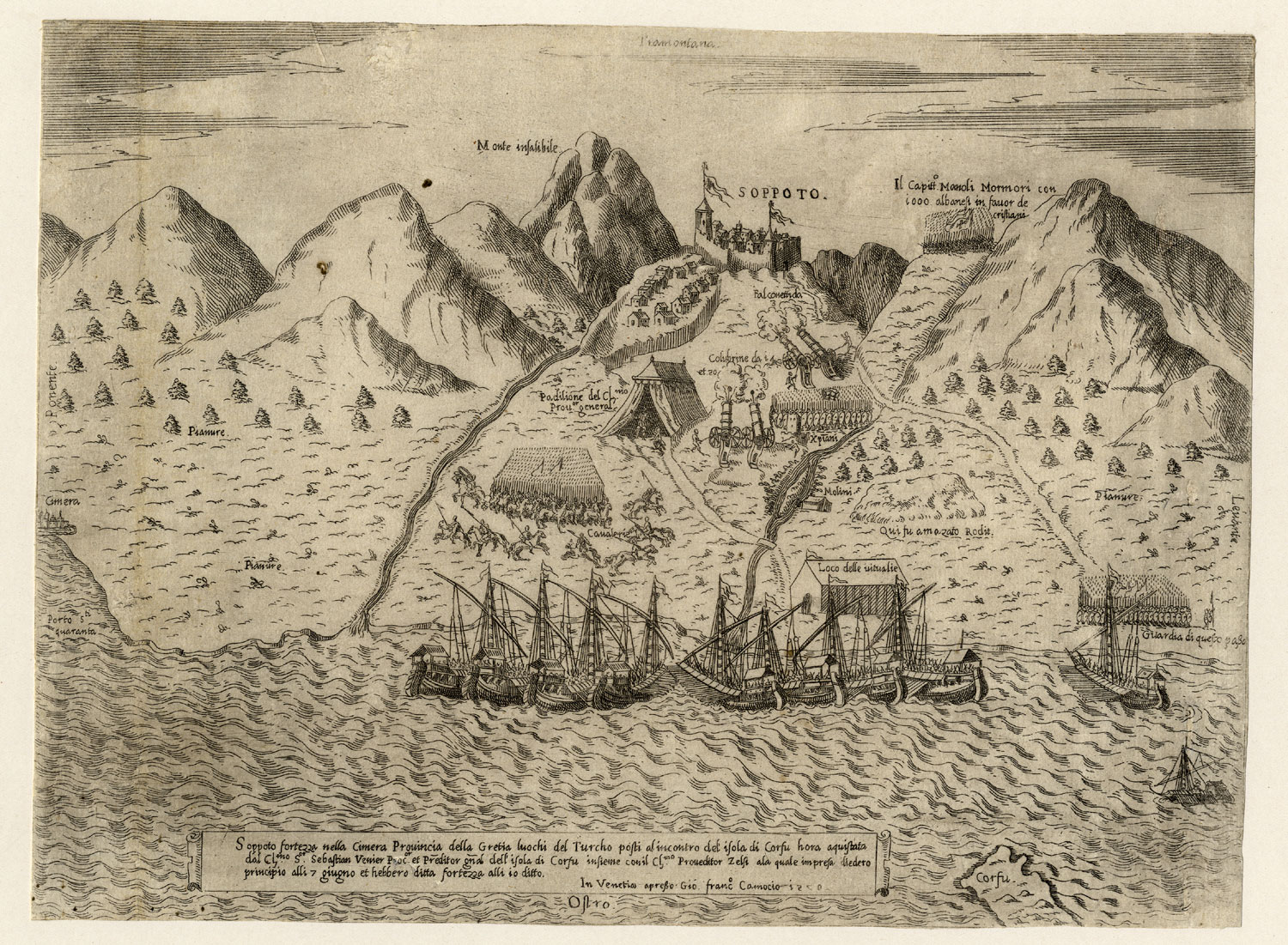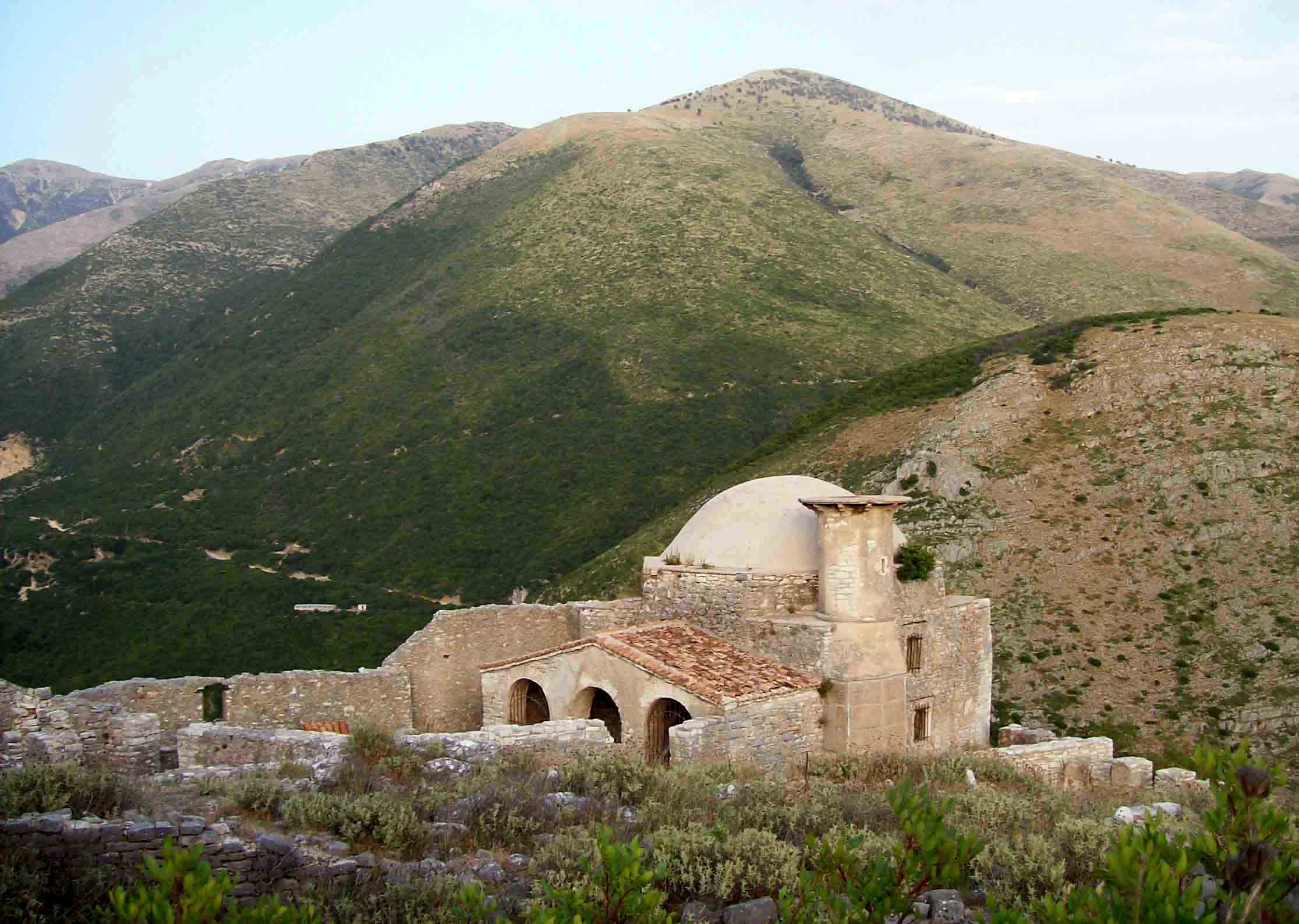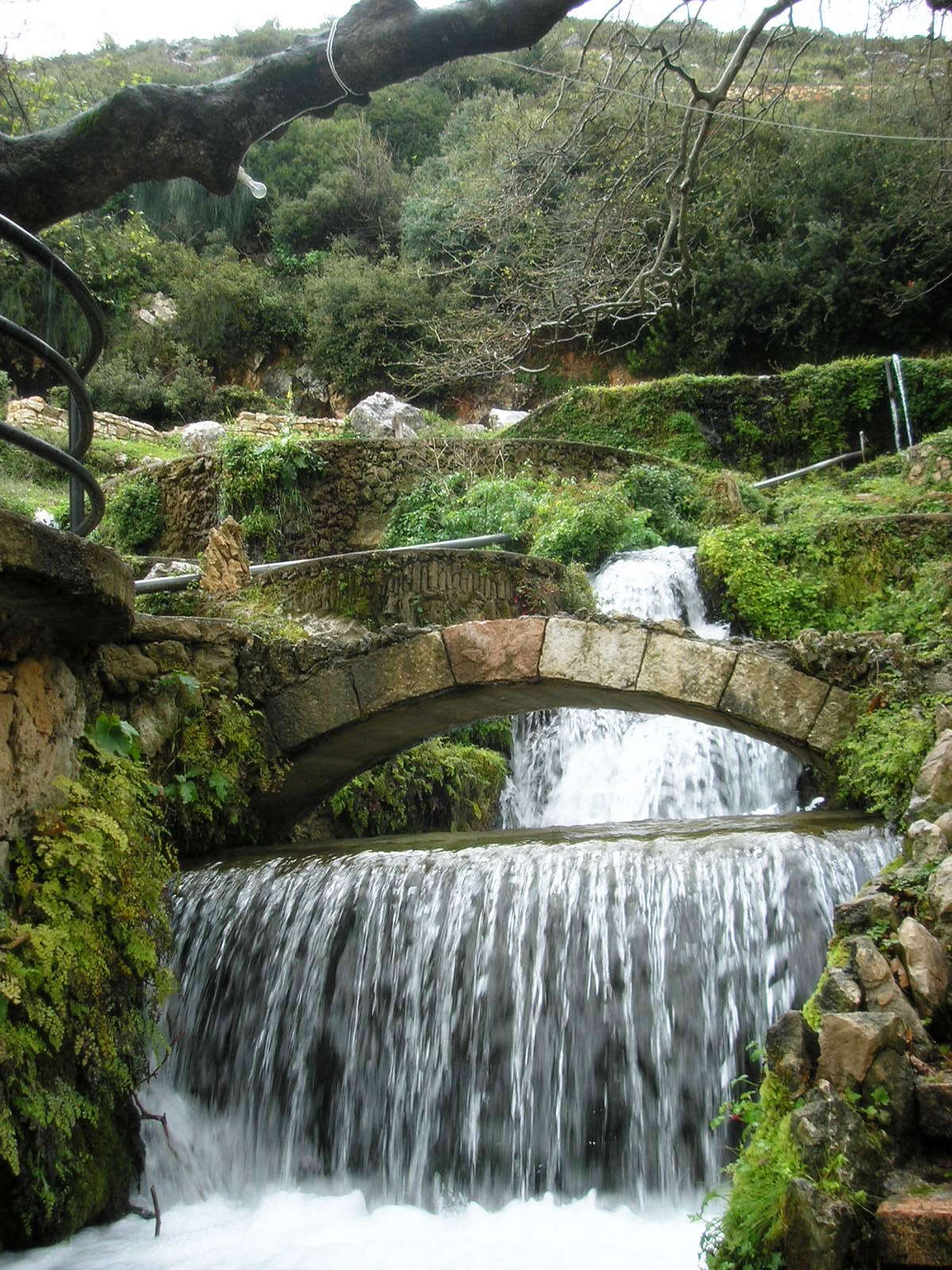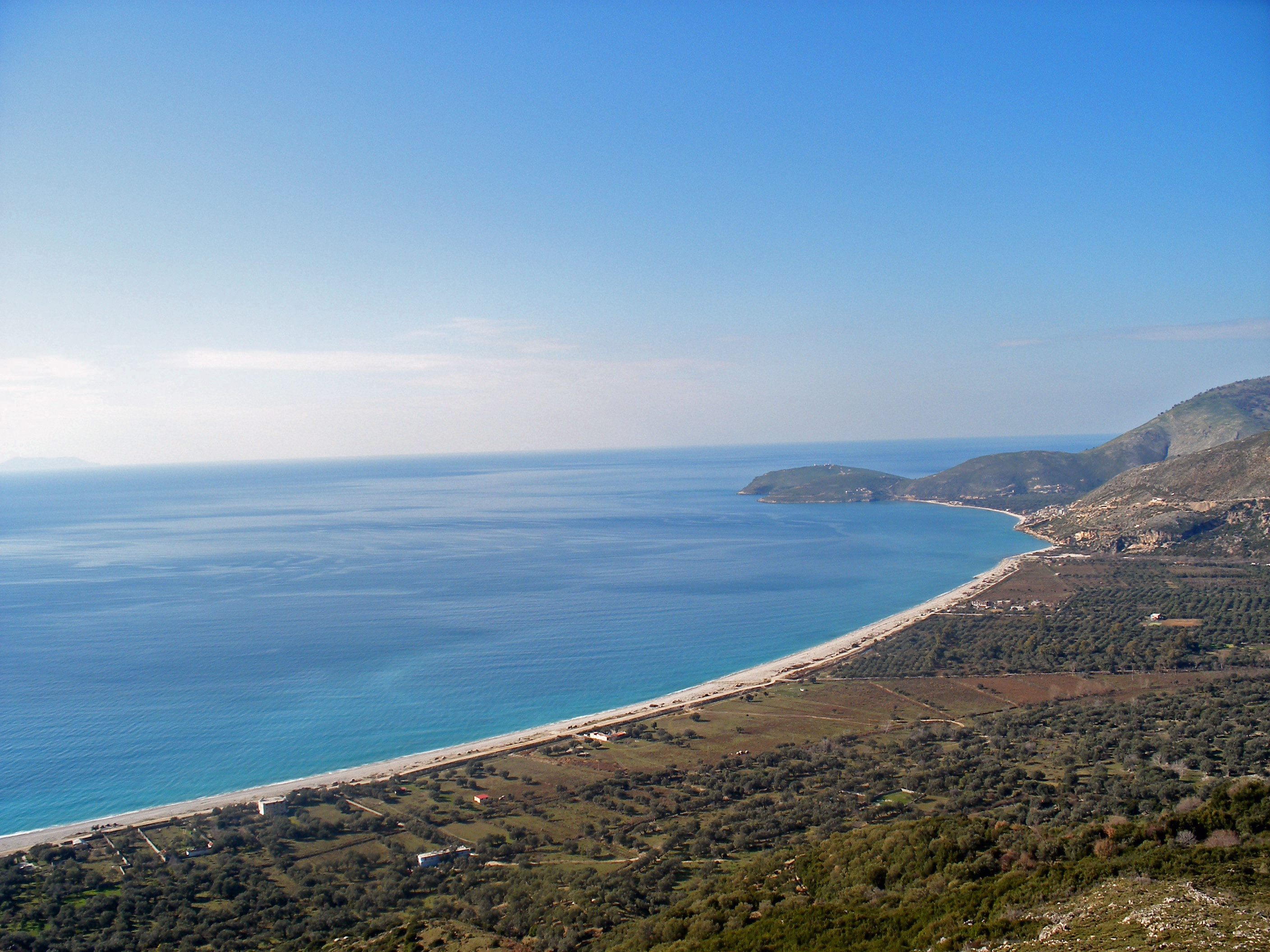Borsh on:
[Wikipedia]
[Google]
[Amazon]
Borsh is a maritime village, in the
Η ελληνική κοινότητα της Αλβανίας υπό το πρίσμα της ιστορικής γεωγραφίας και δημογραφίας [The Greek Community of Albania in terms of historical geography and demography
" In Nikolakopoulos, Ilias, Kouloubis Theodoros A. & Thanos M. Veremis (eds). ''Ο Ελληνισμός της Αλβανίας [The Greeks of Albania]''. University of Athens. p. 51. " AM Αλβανοί Μουσουλμάνοι”; p.53. “BORSH ΜΠΟΡΣΙ 1243 AM" many of whom have traditionally been Bektashi Order, Bektashi. In Borsh, the Lab dialect of
 The region which Borshi is located was part of the
The region which Borshi is located was part of the  The fortress was renovated again by
The fortress was renovated again by

 The village is very stable and growing in prosperity thanks to tourism and olive oil production. The thing that makes Borsh very popular is its beach, which is the largest beach in Ionian sea (7 km).
The tourism has begun to develop a lot thanks to village's beauty and thanks to its friendly people. Continuing in this way Borsh will become soon the best destination for tourists in the South of Albania.
The village is very stable and growing in prosperity thanks to tourism and olive oil production. The thing that makes Borsh very popular is its beach, which is the largest beach in Ionian sea (7 km).
The tourism has begun to develop a lot thanks to village's beauty and thanks to its friendly people. Continuing in this way Borsh will become soon the best destination for tourists in the South of Albania.
''Albanian Language''
. Page 102.
Albanian Riviera
The Albanian Riviera ( sq, Riviera shqiptare, ), also popularly known as Bregu, is a coastline along the Northeastern Ionian Sea in the Mediterranean Sea encompassing the districts of Sarandë and Vlorë in Southwestern Albania. It forms an impo ...
, in the former Lukovë
Lukovë is a village and a former municipality in the Vlorë County, southern Albania. At the 2015 local government reform it became a subdivision of the municipality Himarë. The population at the 2011 census was 2,916.__и_innerhalb_der_historisc ...
municipality, Vlorë County
Vlorë County (; sq, Qarku i Vlorës) is one of the 12 counties of the Republic of Albania with the capital in Vlorë. The county spans and has a total population of 187,675 people as of 2021. It borders the counties of Fier and Gjirokastër, ...
, Albania
Albania ( ; sq, Shqipëri or ), or , also or . officially the Republic of Albania ( sq, Republika e Shqipërisë), is a country in Southeastern Europe. It is located on the Adriatic and Ionian Seas within the Mediterranean Sea and shares ...
, At the 2015 local government reform it became part of the municipality Himarë
Himarë ( sq-definite, Himara; el, Χειμάρρα, ''Cheimarra'' or Χιμάρα, ''Chimara'') is a municipality and region in Vlorë County, southern Albania. The municipality has a total area of and consists of the administrative units of H ...
.
The village is inhabited by Albanians
The Albanians (; sq, Shqiptarët ) are an ethnic group and nation native to the Balkan Peninsula who share a common Albanian ancestry, culture, history and language. They primarily live in Albania, Kosovo, North Macedonia, Montenegro, Se ...
,Kallivretakis, Leonidas (1995).Η ελληνική κοινότητα της Αλβανίας υπό το πρίσμα της ιστορικής γεωγραφίας και δημογραφίας [The Greek Community of Albania in terms of historical geography and demography
" In Nikolakopoulos, Ilias, Kouloubis Theodoros A. & Thanos M. Veremis (eds). ''Ο Ελληνισμός της Αλβανίας [The Greeks of Albania]''. University of Athens. p. 51. " AM Αλβανοί Μουσουλμάνοι”; p.53. “BORSH ΜΠΟΡΣΙ 1243 AM" many of whom have traditionally been Bektashi Order, Bektashi. In Borsh, the Lab dialect of
Albanian
Albanian may refer to:
*Pertaining to Albania in Southeast Europe; in particular:
**Albanians, an ethnic group native to the Balkans
**Albanian language
**Albanian culture
**Demographics of Albania, includes other ethnic groups within the country ...
is spoken.
Borsh borders with Fterra, Qeparo
Qeparo ( sq-definite, Qeparoi; el, Κηπαρό, ''Kiparo'') is a seaside village in the municipality of Himara in Vlorë County, Albania. It is part of the Albanian Riviera and the village is divided in two parts – Upper or Old Qeparo on high ...
, Piqeras
Piqeras ( sq-definite, Piqerasi; el, Πικέρνη, Pikerni) is a village in the former municipality of Lukovë, Vlorë County, southern Albania. At the 2015 local government reform it became part of the municipality Himarë.
Demographics
I ...
, Kuç, Çorraj, Kalasa, Zhulat, Tatzat, and has a population of 2500 registered inhabitants.
History
 The region which Borshi is located was part of the
The region which Borshi is located was part of the Chaonia
Chaonia or Chaon (Greek Χαονία or Χάων) was the name of the northwestern part of Epirus, the homeland of the Epirote Greek tribe of the Chaonians. Its main town was called Phoenice. In Virgil's ''Aeneid'', Chaon was the eponymous ances ...
of the ancient region of Epirus
sq, Epiri rup, Epiru
, native_name_lang =
, settlement_type = Historical region
, image_map = Epirus antiquus tabula.jpg
, map_alt =
, map_caption = Map of ancient Epirus by Heinrich ...
. Borshi was probably fortified from antiquity and it belonged to Kemara (modern Himara) then part of the Chaonian
The Chaonians ( grc, Χάονες, Cháones) were an ancient Greek tribe that inhabited the region of Epirus currently part of north-western Greece and southern Albania.; ; ; ; ; . Together with the Molossians and the Thesprotians, they formed t ...
tribal state, one of the main ancient Greek
Ancient Greek includes the forms of the Greek language used in ancient Greece and the ancient world from around 1500 BC to 300 BC. It is often roughly divided into the following periods: Mycenaean Greek (), Dark Ages (), the Archaic peri ...
tribes in Epirus.
The castle remained in use in Roman times and was refortified by the Emperor Justinian in the sixth century. Nothing is known of the settlement in the Byzantine era, until it is mentioned as Sopotos in 1258 when it was part of the Despotate of Epirus
The Despotate of Epirus ( gkm, Δεσποτᾶτον τῆς Ἠπείρου) was one of the Greek successor states of the Byzantine Empire established in the aftermath of the Fourth Crusade in 1204 by a branch of the Angelos dynasty. It claim ...
that grew out of the failing Byzantine empire. Borsh then went through a period of considerable turmoil, changing hands several times between the Despotate of Epirus and Norman crusades invaders before being taken by the Turks in 1431.
Fifty years later it was captured by Albanians led by Skanderbeg's son Gjon Kastrioti II
Gjon II Kastrioti ( it, Ioanne Castrioto,Theodore Spandounes (Spandugnino), De la origine deli Imperatori Ottomani, Sathas, C. N. (ed.) (1890) Documents inédits relatifs à l'histoire de la Grèce au moyen âge, IX (Paris), p. 159 Giovanni Cast ...
, but was retaken by the Turks eleven years later and heavily refortified. On June 10, 1570 the castle of Sopot was taken by James Celsi, Proveditor of the Venetian navy, who left after leaving in charge the commander of Nauplion
Nafplio ( ell, Ναύπλιο) is a coastal city located in the Peloponnese in Greece and it is the capital of the regional unit of Argolis and an important touristic destination. Founded in antiquity, the city became an important seaport in the ...
, Emmanuel Mormoris
Emmanuel or Manolis Mormoris ( el, Εμμανουήλ Μορμόρης) was a 16th-century Cretan military commander and notable political figure in the Republic of Venice. He was the military commander of a Greek revolt in Ottoman-ruled Epirus at ...
. This also caused part of the nearby Himariotes to submit to Venetian rule. The next year the Ottoman army recaptured it and took Mormori as a prisoner.
The 18th century was a turbulent economic time and due to Orthodox revolts and conflicts with Orthodox powers such as the Russian Empire
The Russian Empire was an empire and the final period of the Russian monarchy from 1721 to 1917, ruling across large parts of Eurasia. It succeeded the Tsardom of Russia following the Treaty of Nystad, which ended the Great Northern War. ...
, Ottoman governors at times applied pressures including drastic tax raises on the local Christian population as well as other pressures caused towns to convert. Borsh converted in 1744 and followed it up by raiding nearby Piqeras
Piqeras ( sq-definite, Piqerasi; el, Πικέρνη, Pikerni) is a village in the former municipality of Lukovë, Vlorë County, southern Albania. At the 2015 local government reform it became part of the municipality Himarë.
Demographics
I ...
, which remained Christian.
 The fortress was renovated again by
The fortress was renovated again by Ali Pasha Tepelena
Ali Pasha of Ioannina (1740 – 24 January 1822), was an Albanian ruler who served as pasha of a large part of western Rumelia, the Ottoman Empire's European territories, which was referred to as the Pashalik of Yanina. His court was in Ioannina ...
, and it is these fortifications that visitors can view by taking the half-hour walk up to the ‘castle rock’ the limestone mount clearly visible above the old village. During Ali pasha's reign there were 700 houses at Borsh, and below the castle mount you can see a ruined mosque of Hajji Bendo and a madrese (a Muslim theological school), both of which were damaged in Ali Pasha's wars but survived, only to be destroyed by fighting after 1912 when the Turks left the region.
Between 1912 and 1914 serious inter-ethnic conflict took place between Greeks and Albanians, and significant portion of the old village was destroyed, however some buildings remain in fine condition. Modern Borsh was built after that, but became seriously depopulated, firstly due to malaria, and following severe reprisal killings by Germans in WW2 however, depopulation was balanced by an influx of refugees from Vlora, fleeing into partisan territory from the city which was heavily contested until late in the war.
Geography
Climate
Economy

 The village is very stable and growing in prosperity thanks to tourism and olive oil production. The thing that makes Borsh very popular is its beach, which is the largest beach in Ionian sea (7 km).
The tourism has begun to develop a lot thanks to village's beauty and thanks to its friendly people. Continuing in this way Borsh will become soon the best destination for tourists in the South of Albania.
The village is very stable and growing in prosperity thanks to tourism and olive oil production. The thing that makes Borsh very popular is its beach, which is the largest beach in Ionian sea (7 km).
The tourism has begun to develop a lot thanks to village's beauty and thanks to its friendly people. Continuing in this way Borsh will become soon the best destination for tourists in the South of Albania.
Culture
Language
The Lab dialect spoken in Borsh was reported by Albanian linguist M.Totoni to possessnasal vowels
A nasal vowel is a vowel that is produced with a lowering of the soft palate (or velum) so that the air flow escapes through the nose and the mouth simultaneously, as in the French vowel or Amoy []. By contrast, oral vowels are produced witho ...
, a characteristic that was previously thought to have been the diagnostic difference between the major Tosk Albanian, Tosk and Gheg Albanian, Gheg divisions, whereby Tosk dialects such as Borsh's lab dialect were previously thought to have all lost nasal vowels when they split from Gheg dialects, which retained the nasality feature.Paçarizi , Rrahman (2008)''Albanian Language''
. Page 102.
See also
*Albanian Ionian Sea Coast
The Albanian Ionian Sea Coast ( — ) is a coastline of the Northeastern Ionian Sea, that encompasses the southwestern border of the Republic of Albania, stretching from the southern half of Karaburun Peninsula, across the historical region of ...
**Albanian riviera
The Albanian Riviera ( sq, Riviera shqiptare, ), also popularly known as Bregu, is a coastline along the Northeastern Ionian Sea in the Mediterranean Sea encompassing the districts of Sarandë and Vlorë in Southwestern Albania. It forms an impo ...
References
{{DEFAULTSORT:Borsh Villages in Vlorë County Populated places in Himara Albanian Ionian Sea Coast Archaeological sites in Albania Beaches of Albania Labëria